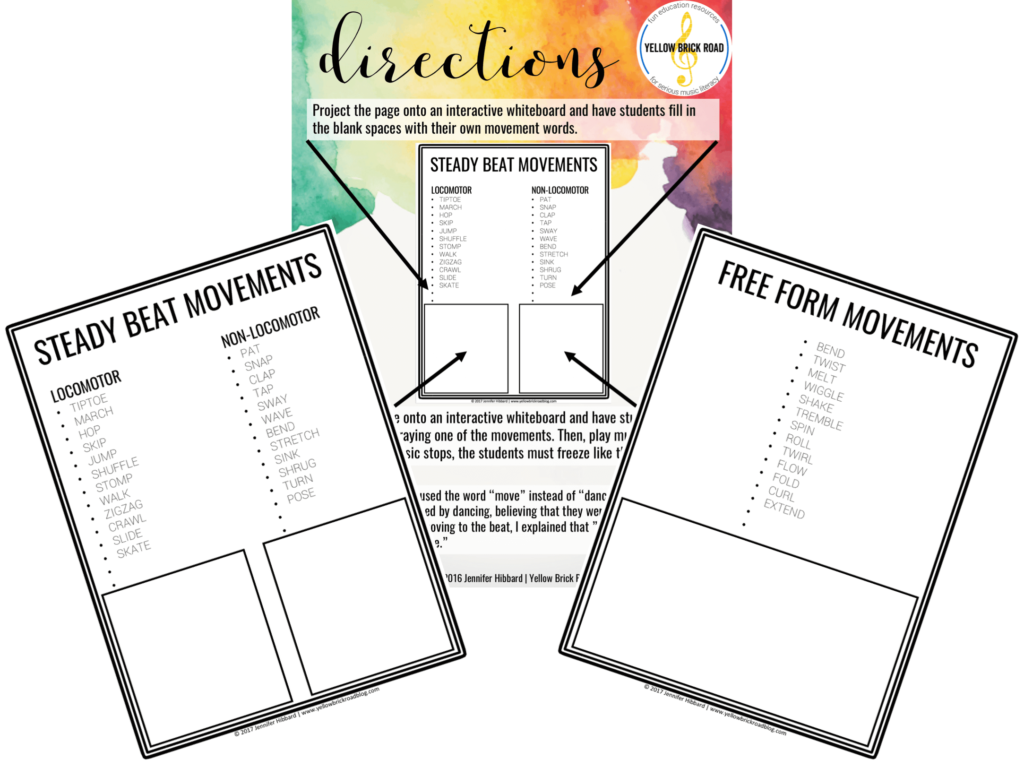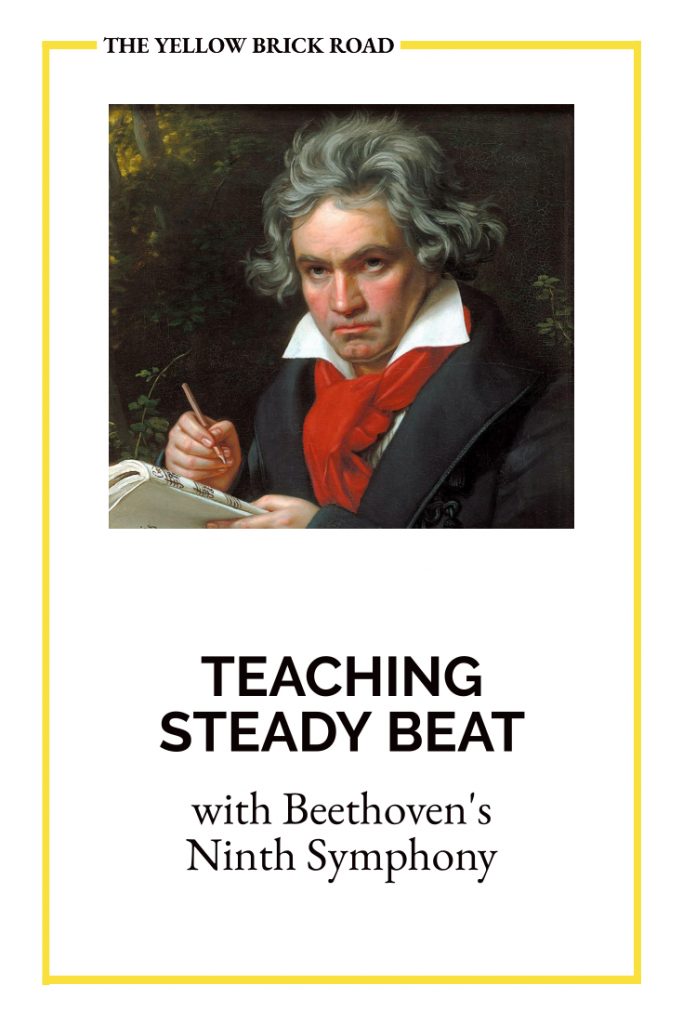Last month, I shared ideas on how to teach tempo using the art music of Florence Price, Johannes Brahms, and Alton Adams. Today, I’m going to share how you can teach steady beat using Beethoven’s Ninth Symphony.

STEADY BEAT WITH MOVEMENT & BODY PERCUSSION
Students of all ages can use extra practice with steady beat, whether as a quick warm-up or as a full lesson. They could use body percussion, such as clapping, patting, and stomping. Or, you could ask them to move around the room, stepping to the beat of Beethoven’s Ninth. For a free list of locomotor and non-locomotor movements, click the image below.

I often practiced steady beat with my students using the “Music Freeze Game”. Essentially, students moved around the room to the steady beat and had to freeze each time the music stopped. I usually used art music, as it was a fun and active way for students to experience this type of music. My friend Elizabeth from Organized Chaos wrote a blog post with fantastic tips for playing this game. You can read them HERE.
In addition to having students move to the steady beat, ask them to create their own body percussion. They can break into pairs to brainstorm, and then share their movements with the rest of the class. This is a great way to get them involved in the creation process. It also provides more buy-in, because they’re using their own creations to move to the beat.
I created a guided listening activity, in which students identify, move to, and practice the steady beat using Beethoven’s 9th Symphony. If you’re new to incorporating art music in your classroom, this would be a great resource. You can see a preview of it HERE.
STEADY BEAT WITH RHYTHM INSTRUMENTS
Once students have internalized the beat with their bodies, try switching to rhythm instruments. As any elementary music teacher knows, instruments of any kind require a fair bit of practice with procedures and technique. After all, most students won’t have access to these instruments at home, so we can’t assume that they’ll know how to hold them, play them, or care for them.
When it comes to procedures in the classroom, I think it’s important that students see both the correct way of doing things, as well as the incorrect way. They need plenty of examples so that there’s no room for interpretation. Room for interpretation means room for rhythm sticks to go up someone’s nose or in someone’s mouth. You can read more about how I used to teach procedures in this blog post.
Once students have their instruments and are playing to the steady beat, try mixing it up. For example, if they have rhythm sticks, have them tap them on the floor or chairs. Or ask them to trade instruments with the person next to them. If they need a challenge, ask them to only play on the strong beats (assuming they’ve studied them previously). For more ideas, be sure to check out my Moving with Beethoven resource, which you can preview HERE.

